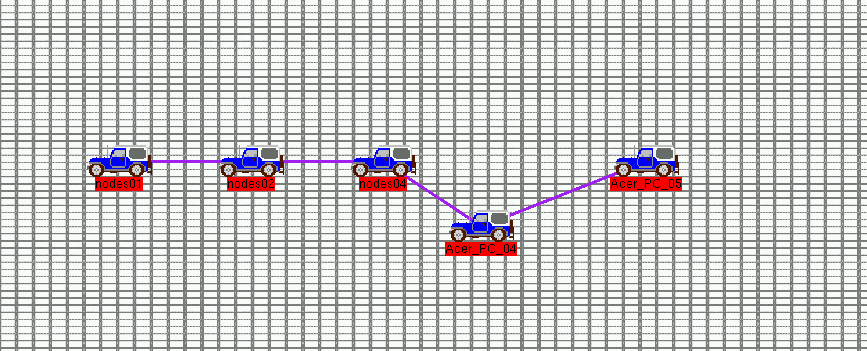The Operating System on the mesh board is uClinux, which is a popular embeded Linux. The current kernel version is 2.4.24.
To build uClinux on the IXP425 board, a cross compiler tool chain for ARM/Xscale is needed. The compilng process of uClinux is similar to build a regular Linux kernel. The next step is to load the new kernel image onto the mesh board:
> load -r -v -b 0x01600000 zImage
> load -r -v -b 0x00800000 jffs2.img
> fis create -b 0x01600000 -l 0xc0000 zimage
> fis create -b 0x00800000 -l 0xec0000 root
Quality of Serveice (QoS) OLSR is deployed as the routing protocol of the wireless mesh network. It adds QoS support to the standard OLSR protocol. The implementation is from Communications Research Centre (CRC).
There are two radios on each mesh node. The routing protocol OLSR is running on one interface to establish the mesh backbone. The other interface does not join in the routing process. It provides access to wireless client in the local footprint. To anounce the reachability of wireless clients in local footprints to the mesh back bone, the Host and Network Association (HNA) message in OLSR is employed to provide connectivity from the OLSR interface(s) to those non-OLSR interface(s). A mesh node injects route information of an associated network in the local footprint into the OLSR mesh network by periodically multicasting HNA messages, with the following information:
When other mesh nodes receive HNA messages, they generate correspondent entries in the routing tables. Therefore, the mesh back bone and local footprints are fully integrated. In order to generate the HNA message, we need to determine the IP addresses of arriving wireless clients.
Dynamic Host Configuration Protocol for IPv6 (DHCPv6)
Our mesh network is based on IPv6. DHCPv6 is deployed as the address autoconfiguration mechanism. The DHCPv6 protocol is a client server model. Through the DHCPv6 message exchange, a client acquires configuration information from the server. DHCPv6 messages are carried by UDP packets. The IP address allocated by the DHCPv6 server is carried in the Reply message.
Inter-Process Communication (IPC)
We use IPC to send the IP address information to the OLSR routing process.
On the test bed, we use NRL's Mobile Network Emulator, to emulate various test senarios. CMap also from NRL, is deployed as the visualization tool to demonstrate the network toplogy.
Example Screenshot
